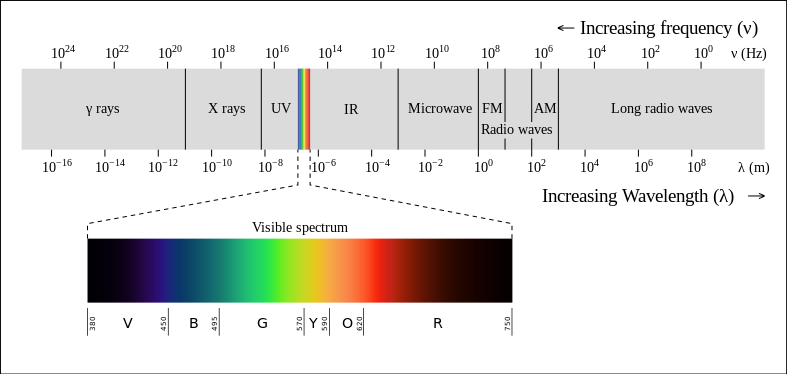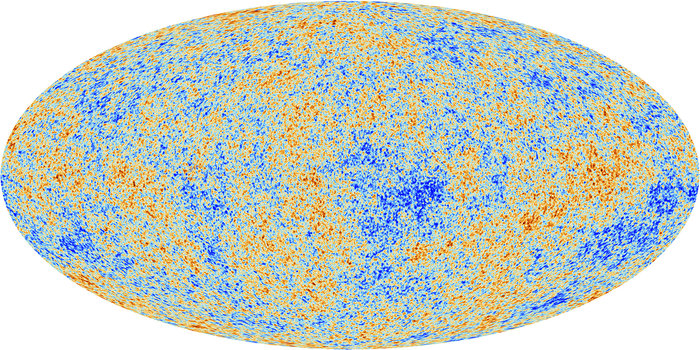How old is the universe?
The deeper you look into space, the further you are looking back in time. This is because the further light is away from us, the longer it takes for it to reach us. Looking back in time to about 378,000 years after the birth of the universe, and thus viewing light from about 13.7 billion light years away, scientists have detected a uniform radiation throughout the universe known as the Cosmic Microwave Background (CMB, for short). Studying this CMB can help us to determine many things about the early universe, including approximately when the creation event, the Big Bang, occurred. Additionally, observing the CMB allows us to look extremely far back into history since it is the earliest radiation in the entire universe!
What was the universe like shortly after the Big Bang?
Before the CMB came about, the universe was extremely hot and dense; so dense that photons, particles of light, could not travel freely. This is why we cannot detect any light that existed before the presence of the CMB; there was none. During this time, all of the hydrogen in the universe was ionized due to the high temperatures, which means the electrons were separate from the protons. Light particles could not travel very far without running into an electron, so no light was emitted, and the universe was opaque! In a period known as the Recombination Era, the universe expanded and slowly cooled off, which allowed for the individual protons and electrons to combine to form hydrogen atoms (made of one proton and one electron). Thus, photons were able to move freely through space, meaning the universe became transparent. The photons that were emitted when the hydrogen atoms formed make up the CMB.
How was CMB originally detected?
Though the idea of a cosmic radiation of the universe came about in the 1940s, CMB was not directly detected until 1964. In this year, scientists Arno Penzias and Robert Wilson were receiving a lot of “noise†in their data collection through their radio telescopes. They initially believed this noisy data was a result of interfering radio signals from nearby New York City, and when that was proven wrong, they thought pigeon droppings were to blame for the faulty data. After eliminating the pigeon problem and accounting for extraneous radio signals, they had an important realization – this noise they were receiving in their data was a visible echo of the universe at a very early point in time!
CMB radiation cannot be observed with visible light telescopes, since the energy of its light waves peaks in the microwave range, and visible light telescopes are not sensitive to microwaves. Each wavelength in the range of the electromagnetic spectrum is a form of light, though most are invisible to the human eye. As the diagram below demonstrates, visible light only makes up a very small portion of the entire electromagnetic spectrum. It is also worth noting that light has a wave-particle duality, which means that on the quantum mechanical scale it behaves as both a wave (i.e. the electromagnetic spectrum) and particles (photons).

What research is currently being conducted?
The main instruments recording data involving CMB are BICEP2 (Background Imaging of Cosmic Extragalactic Polarization 2), the Keck Array, and the Planck Space Observatory. BICEP2 recently detected apparent CMB radiation from gravitational waves in the early universe. However, there was a huge controversy over this data and whether or not the detected radiation was actually just light scattering off dust between stars in the Milky Way, which would provide a false signal to the telescope.

(ESA and the Planck Collaboration)
The image above is an analysis of data collected with Planck. The Big Bang model predicts an approximately uniform CMB in all directions, as this picture essentially demonstrates. The temperature fluctuations (which are actually very tiny; they are exaggerated in this image) correspond with different densities of various regions, with the denser regions later becoming the stars and galaxies we know today. This image is a visual representation of these slight variations in temperature throughout space, with hotter temperatures appearing as red and orange, and cooler temperatures appearing blue. Thus, the hotter, redder regions represent denser regions of the universe.
So… why is this important?
Studying CMB allows us to move one step closer to understanding the age old-question of the mysterious origins of our universe. This on its own would be an astounding achievement for humankind.
References:
Photo Credits:
Paige Copenhaver is an undergraduate studying Physics and Astronomy at the University of Georgia. When she is not studying absorption spectra of solar-type stars, she can be found playing ukulele or reading Lord of the Rings. You can email her at pac25136@uga.edu or follow her on twitter: @p_copenhaver.
About the Author
- athenssciencecafehttps://athensscienceobserver.com/author/athenssciencecafe/April 17, 2020
- athenssciencecafehttps://athensscienceobserver.com/author/athenssciencecafe/April 12, 2020
- athenssciencecafehttps://athensscienceobserver.com/author/athenssciencecafe/April 3, 2020
- athenssciencecafehttps://athensscienceobserver.com/author/athenssciencecafe/March 30, 2020







